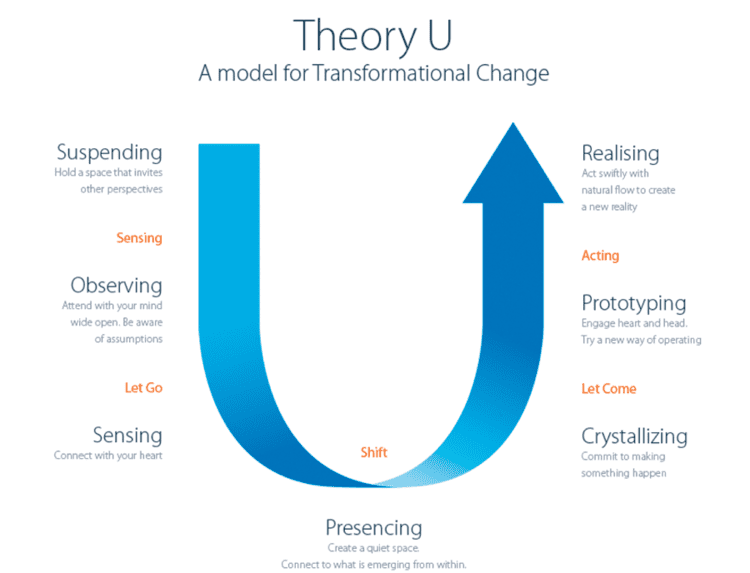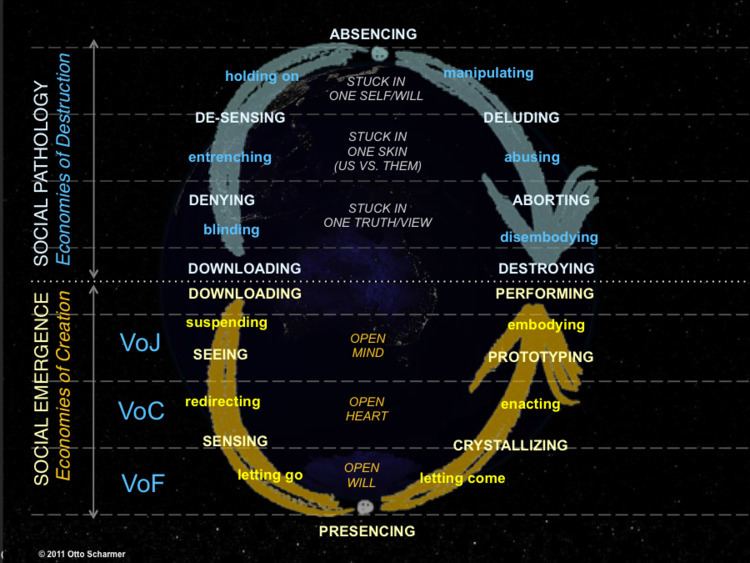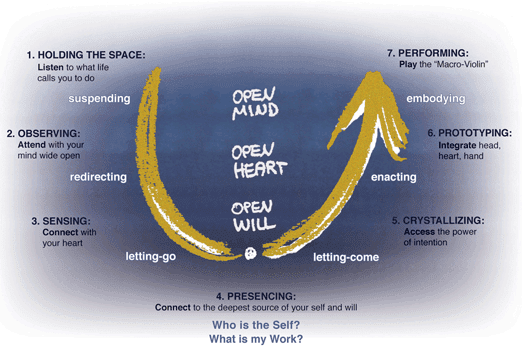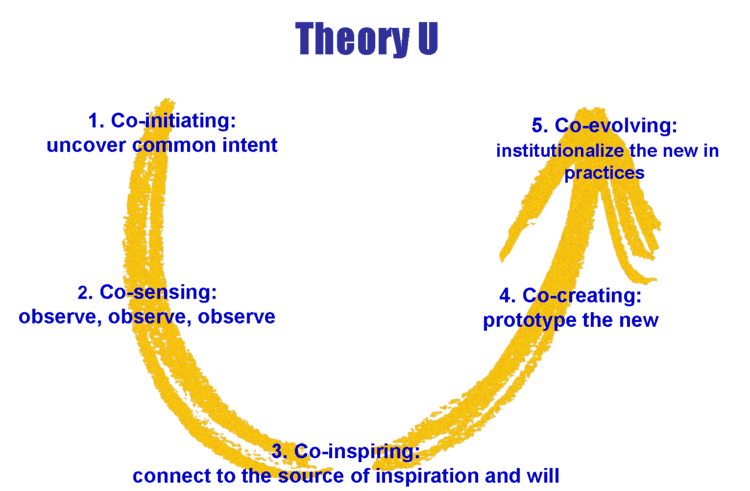 | ||
Theory u learning from the future as it emerges otto scharmer tedxtuhh
Theory U is a change management method and the title of a book by Otto Scharmer. During his doctoral studies at Witten/Herdecke University, Scharmer studied a similar method in classes taught by Friedrich (Fritz) Glasl, and he also interviewed Glasl. Scharmer then took the basic principles of this method and extended it into a theory of learning and management, which he calls Theory U. The principles of Theory U are suggested to help political leaders, civil servants, and managers break through past unproductive patterns of behavior that prevent them from empathizing with their clients' perspectives and often lock them into ineffective patterns of decision making.
Contents
- Theory u learning from the future as it emerges otto scharmer tedxtuhh
- The essence of theory u and presencing
- U procedure or U process
- Discussion
- References

The essence of theory u and presencing
U-procedure or U-process

The initial method developed by Glasl and Lemson involved a sociotechnical, Goethean and anthroposophical process involving a few or many co-workers, managers and/or policymakers. It proceeded from phenomenological diagnosis of the present state of the organisation to plans for the future. They described a process in a U formation consisting of three levels (technical and instrumental subsystem, social subsystem and cultural subsystem) and seven stages beginning with the observation of organisational phenomena, workflows, resources etc., and concluding with specific decisions about desired future processes and phenomena. The method draws on the Goethean techniques described by Rudolf Steiner, transforming observations into intuitions and judgements about the present state of the organisation and decisions about the future. The three stages represent explicitly recursive reappraisals at progressively advanced levels of reflective, creative and intuitive insight and (epistemologies), thereby enabling more radically systemic intervention and redesign. The stages are: phenomena – picture (a qualitative metaphoric visual representation) – idea (the organising idea or formative principle) – and judgement (does this fit?). The first three then are reflexively replaced by better alternatives (new idea --> new image --> new phenomena) to form the design design. This is achieved through 7 questions

The U-procedure was used extensively in projects in at least USA, Brazil, Europe (including the UK), South Africa and New Zealand by members and associates of the NPI and other consultants,and subsequently by members of the Association for Social Development (see for example Büchele, 1997), where it was discussed in the 1997 Conference in Spring Valley, USA. Glasl published the method in Dutch (1975), German (1975, 1994) and English (1997).
The seven stages are shown below.
Discussion

Theory U now constitutes a body of leadership and management praxis drawing from the original work of Glasl and Lemson, the contribution of organization development consultants over several decades, and more than 10 years of elaboration by Scharmer and colleagues. Key attributes of this praxis include:

- Specific linkage of the consciousness of the leader/leadership team with the results of their work.
- Individuals and teams move through a whole system integrated planning process involving observation, knowing and visualized decision-making.
- Innovation is integral.
- Policy making (as the elaboration of conscious design principles for the organization) is connected and integrated with the vision of what is to be brought about.
- Relevant to both individual development and practice and organization development and practice, and indeed explicitly connecting these.
- A social technology that contributes to either or both of conflict resolution and social engineering.
Meditation teacher Arawana Hayashi has explained how she considers Theory U relevant to "the feminine principle".

